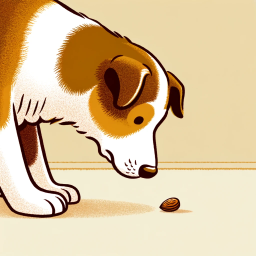healthy treats for diabetic dogs

For dog owners, treating our furry friends is one of the many joys of pet ownership. However, when your dog has diabetes, choosing the right treat becomes a critical decision. Diabetes, a condition that affects the way your dog’s body processes sugar, requires careful dietary management. This article explores safe and healthy treat options for diabetic dogs, ensuring they enjoy their snacks without compromising their health.
The Role of Diet in Managing Diabetes
Diet plays a vital role in managing canine diabetes. The goal is to keep your dog’s blood sugar levels within a normal range. Treats for diabetic dogs should have a low glycemic index, meaning they release glucose slowly and don’t cause a spike in blood sugar.
A detailed table listing of different dog breeds along with the types of diabetes commonly seen in each breed, as well as symptoms and diagnosis, would be quite extensive.
| Breed | Type of Diabetes | Common Symptoms | Diagnosis Approach | Possible Treatment |
|---|---|---|---|---|
| Labrador Retriever | Type 1 | Increased thirst, urination, weight loss | Blood and urine tests | Insulin therapy, diet management |
| German Shepherd | Type 1 | Lethargy, weight loss, polyuria | Blood and urine tests | Insulin injections, specialized diet |
| Golden Retriever | Type 1 | Increased hunger, vision problems | Blood and urine tests | Insulin, dietary adjustments |
| Dachshund | Type 1 | Excessive thirst, urination | Blood and urine tests | Insulin therapy, diet control |
| Beagle | Type 1 | Weight loss, lethargy | Blood and urine tests | Insulin, consistent feeding schedule |
| Boxer | Type 1 | Increased hunger, skin infections | Blood and urine tests | Insulin injections, low-carb diet |
| Poodle | Type 1 | Change in appetite, cataracts | Blood and urine tests | Insulin therapy, regular exercise |
| Siberian Husky | Type 1 | Thinning fur, weakness | Blood and urine tests | Insulin, controlled diet |
| Alaskan Malamute | Type 1 | Excessive urination, cloudy eyes | Blood and urine tests | Insulin therapy, weight management |
| Cocker Spaniel | Type 1 | Loss of appetite, vomiting | Blood and urine tests | Insulin, high-fiber diet |
| Rottweiler | Type 1 | Fatigue, muscle wasting | Blood and urine tests | Insulin injections, diet modification |
| Yorkshire Terrier | Type 1 | Skin infections, cataracts | Blood and urine tests | Insulin, regular health monitoring |
| Doberman Pinscher | Type 1 | Vomiting, change in gait | Blood and urine tests | Insulin therapy, dietary changes |
| Miniature Schnauzer | Type 1 | Increased thirst, UTIs | Blood and urine tests | Insulin, consistent meal times |
| Shih Tzu | Type 1 | Poor coat, panting | Blood and urine tests | Insulin injections, balanced diet |
| Border Collie | Type 1 | Lethargy, polydipsia | Blood and urine tests | Insulin therapy, physical activity |
| Chihuahua | Type 1 | Weight loss, dehydration | Blood and urine tests | Insulin, low-sugar diet |
| Bulldog | Type 1 | Increased thirst, weight gain | Blood and urine tests | Insulin injections, exercise |
| Pomeranian | Type 1 | Increased hunger, weakness | Blood and urine tests | Insulin, diet low in fat and carbs |
| Australian Shepherd | Type 1 | Increased urination, eye changes | Blood and urine tests | Insulin therapy, regular vet check-ups |
| Samoyed | Type 1 | Decreased appetite, vomiting | Blood and urine tests | Insulin, dietary management |
| Cavalier King Charles Spaniel | Type 1 | Fatigue, excessive thirst | Blood and urine tests | Insulin, weight control |
| Bichon Frise | Type 1 | Increased appetite, urination | Blood and urine tests | Insulin injections, high-fiber diet |
| Great Dane | Type 1 | Weight loss, lethargy | Blood and urine tests | Insulin therapy, regular monitoring |
| Bernese Mountain Dog | Type 1 | Increased thirst, cataracts | Blood and urine tests | Insulin, controlled carbohydrate intake |
| Mastiff | Type 1 | Weakness, panting | Blood and urine tests | Insulin, low-fat diet |
| Brittany Spaniel | Type 1 | Weight loss, lethargy | Blood |
Note:
- Type 1 diabetes is most common in dogs; Type 2 is rare.
- Symptoms listed are general and can vary.
- Diagnosis should always be made by a veterinarian through blood and urine tests.
Understanding Diabetes in Dogs
Canine diabetes, primarily Type 1, is a condition where the pancreas fails to produce enough insulin, a hormone that controls blood sugar levels. Managing this condition requires a careful balance of diet, exercise, and insulin therapy.
Key Nutritional Components
- Consistent Carbohydrates: Carbohydrates have the most direct impact on blood sugar levels. Diabetic dogs benefit from diets with low to moderate levels of complex carbohydrates that are absorbed slowly and predictably. Whole grains like brown rice or barley can be good options.
- High-Quality Protein: Protein helps in maintaining muscle mass and overall health. However, it’s essential to choose high-quality sources like lean meats to avoid excess fat intake. The amount of protein should be adjusted according to the dog’s kidney function, as diabetes can sometimes lead to kidney issues.
- Fiber: Dietary fiber plays a crucial role in diabetic management. Soluble fiber can help slow down glucose absorption and manage blood sugar levels, while insoluble fiber aids in digestion and satiety. Sources of fiber include vegetables, bran, and specialized veterinary diets.
- Low Fat: Diabetic dogs often struggle with maintaining a healthy weight. Diets low in fat are recommended to prevent obesity, which can exacerbate diabetic symptoms.
- Essential Fatty Acids: Omega-3 and Omega-6 fatty acids are beneficial for skin health and coat quality. They also have anti-inflammatory properties. Sources like fish oil can be included in moderation.
- Vitamins and Minerals: A balanced intake of vitamins and minerals is vital for overall health. However, excessive supplements should be avoided unless specifically recommended by a veterinarian.
Considerations for Feeding Diabetic Dogs
- Consistent Feeding Schedule: Feeding diabetic dogs at the same times every day helps to regulate blood sugar levels. It also coincides better with insulin therapy.
- Portion Control: Overfeeding can lead to obesity and make diabetes harder to control. Accurate portion control, often determined with the help of a vet, is essential.
- Monitoring: Regular check-ups with a veterinarian are crucial. They can adjust the diet based on blood sugar monitoring and the dog’s response to the current dietary plan.
How to Read Labels to Choose Safe Treats for Diabetic Dogs
Selecting treats for a diabetic dog requires careful consideration, especially when it comes to understanding and interpreting food labels. Knowing how to read these labels is crucial in choosing treats that won’t adversely affect your dog’s blood sugar levels.
Understanding Pet Food Labels
- Ingredients List:
- Order of Listing: Ingredients are listed in descending order by weight. This means the first few ingredients are the most prevalent.
- Identifying Sugars: Look for ingredients like corn syrup, fructose, dextrose, maltose, or any syrup. These are indicators of high sugar content.
- Carbohydrates: While not always listed directly, ingredients like corn, wheat, and rice are high in carbohydrates, which impact blood sugar levels.
- Guaranteed Analysis:
- This section provides the minimum or maximum levels of nutrients like protein, fat, fiber, and moisture.
- Fiber Content: Higher fiber is generally better for diabetic dogs as it slows the absorption of glucose.
- Nutritional Adequacy Statement:
- This statement indicates whether the treat is complete and balanced for a particular life stage of a dog. For diabetic dogs, treats that complement their dietary needs are preferable.
- Caloric Content:
- Knowing the calorie content helps in managing the overall calorie intake of a diabetic dog, essential for weight management.
Tips for Choosing Diabetic-Friendly Treats
- Look for Low Sugar and Low Glycemic Ingredients:
- Choose treats with low sugar content and low glycemic ingredients like whole grains and certain vegetables.
- Opt for High Fiber Options:
- Treats with high fiber can help regulate blood sugar levels.
- Avoid Artificial Additives:
- Artificial colors, flavors, or preservatives can cause unnecessary health complications.
- Consider Treats Specific for Diabetic Dogs:
- Some manufacturers produce treats specifically designed for diabetic dogs, taking the guesswork out of label reading.
- Mind the Portion Sizes:
- Even the healthiest treats can be harmful in excessive amounts. Stick to the recommended portion sizes.
Fruits and Vegetables as Treats for Diabetic Dogs
Why Fruits and Vegetables?
Fruits and vegetables are excellent treat options for diabetic dogs for several reasons:
- Low in Calories: They help in maintaining a healthy weight, a key factor in diabetes management.
- Rich in Fiber: High fiber content aids in the slow release of glucose into the bloodstream, preventing spikes in blood sugar.
- Nutrient-Rich: They provide essential vitamins and minerals.
Safe Fruits for Diabetic Dogs
When offering fruits, moderation is key due to their natural sugar content. Here are some safe options:
- Apples (without seeds): Rich in fiber and low in fat.
- Blueberries: Antioxidant-rich and low in sugar.
- Blackberries: High in vitamins and low in calories.
- Cranberries: Good for urinary tract health but should be given in small quantities.
- Pears (without seeds): High in fiber and vitamin C.
Safe Vegetables for Diabetic Dogs
Vegetables are generally lower in sugars than fruits and can be a healthier treat option:
- Carrots: Low in calories and high in fiber, great for dental health.
- Green Beans: Full of vitamins and very low in calories.
- Broccoli: Rich in nutrients but should be given in moderation due to potential gastric irritation.
- Cucumber: Low in carbohydrates and hydrating.
- Pumpkin: High in fiber and helps with digestion.
Preparation and Portioning
- Wash Thoroughly: Always wash fruits and vegetables to remove pesticides and chemicals.
- Proper Portioning: Treats should only constitute a small portion of the dog’s diet, especially for diabetic dogs.
- Cooking: Some vegetables can be lightly steamed for easier digestion, but avoid adding any oils or spices.
Things to Avoid
- Grapes and Raisins: Toxic to dogs.
- High Sugar Fruits: Like bananas or mangoes, should be avoided or given in very minimal amounts.
- Onions and Garlic: Toxic and can cause anemia.
Creative and Healthy Treat Ideas for Diabetic Dogs
- Frozen Veggie Pops:
- Blend low-carb vegetables like cucumbers or green beans with water and freeze them in ice cube trays for a refreshing treat.
- Dehydrated Meats:
- Make your own dehydrated chicken or beef strips in an oven or a dehydrator. Ensure there’s no added sugar or salt.
- Sweet Potato Chews:
- Slice sweet potatoes thinly and bake them at a low temperature until they’re chewy. They’re a great source of fiber.
- Apple and Carrot Cubes:
- Small pieces of apple and carrot can be a crunchy, hydrating treat. Remember to use them sparingly due to their natural sugars.
- Homemade Peanut Butter Balls:
- Mix unsalted and unsweetened peanut butter with a bit of flaxseed for added fiber. Roll into small balls and refrigerate.
- Berry Frosty Treats:
- Mash low-GI berries like blueberries or raspberries, mix with plain Greek yogurt, and freeze in small portions.
- Cauliflower Bites:
- Steam cauliflower until it’s soft, mash it, and then bake small portions into bite-sized treats.
- Pumpkin Puree:
- Plain, canned pumpkin (not pumpkin pie filling) is high in fiber and can be given as a treat or mixed with regular food.
Considerations for Treat Preparation
- Watch Portion Sizes: Treats should make up a small portion of your dog’s daily calorie intake.
- Balance with Regular Meals: Adjust your dog’s regular meals to account for the extra calories from treats.
- Consult Your Vet: Before introducing any new treats, especially for dogs with health conditions like diabetes, it’s important to consult with a veterinarian. They can provide guidance on the right types and amounts of fruits and vegetables, considering the dog’s overall diet and health status
Feeding Strategies and Portion Control for Diabetic Dogs
Proper feeding strategies and portion control are essential for maintaining stable blood sugar levels, preventing obesity, and ensuring overall well-being.
For diabetic dogs, erratic feeding schedules and inconsistent portion sizes can lead to fluctuations in blood sugar levels. A structured feeding routine, alongside carefully measured portions, ensures that their dietary intake is aligned with their insulin therapy, if applicable.
Establishing a Feeding Schedule
- Consistency is Key: Feed your diabetic dog at the same times each day to coincide with their insulin injections. This regularity helps in stabilizing blood glucose levels.
- Frequency of Meals: Some vets recommend feeding diabetic dogs twice daily, approximately 12 hours apart. However, the specific needs can vary, so it’s important to follow your vet’s advice.
Portion Control Techniques
- Accurate Measurement: Use a standard measuring cup or a kitchen scale to ensure precise portions.
- Adjusting Portions: The portion size should be based on the dog’s weight, activity level, and the calorie content of the food.
- Monitoring Weight: Regularly weigh your dog to ensure they maintain a healthy weight. Adjust portions accordingly if there are significant weight changes.
Choosing the Right Food
- Specialized Diabetic Dog Food: These are formulated to have a low glycemic index and help in managing blood sugar levels.
- High-Fiber Diets: Diets rich in fiber slow down the absorption of glucose into the bloodstream.
- Protein and Carbohydrates: A balanced amount of high-quality protein and complex carbohydrates is essential for overall health.
Managing Treats
- Treats Count: Remember that treats count towards the dog’s daily calorie intake. They should not exceed 10% of the total diet.
- Healthy Treat Options: Opt for low-calorie, high-fiber treats. Vegetables like green beans or carrots are good choices.
- Avoid Sugary Treats: Steer clear of treats high in sugar and fat.
Adjusting Diet Based on Activity
- Increased Activity: If your dog has had more exercise than usual, they might need more food to compensate for the extra energy expenditure.
- Less Active Days: Reduce the portion size if your dog has been less active than usual to prevent weight gain.
Sugar Substitutes in Dog Treats
For diabetic dogs, managing sugar intake is crucial. However, this doesn’t mean treats are off the table. Sugar substitutes can offer a way to give treats without affecting blood sugar levels significantly. But it’s essential to understand which sugar substitutes are diabetic dog treats and how they can be incorporated into treats.
Understanding Sugar Substitutes
- Artificial Sweeteners: These include substances like aspartame, sucralose, and saccharin. While they are low in calories and do not raise blood sugar levels, not all artificial sweeteners are safe for dogs.
- Natural Sweeteners: Natural sugar substitutes like stevia and xylitol are often used in place of sugar. However, some of these can be toxic to dogs.
- Sugar Alcohols: Substances like sorbitol and mannitol are less sweet than sugar but have a lower impact on blood glucose. They are generally safe in small amounts but can cause digestive upset in dogs.
Safe Options for Diabetic Dogs
- Stevia: This natural sweetener is generally considered safe for dogs in small quantities. It does not contribute to a rise in blood sugar levels.
- Erythritol: A sugar alcohol that is safe for dogs and does not affect blood sugar or insulin levels.
- Avoid Xylitol: It’s critically important to avoid xylitol, a common sugar substitute found in many products, which is extremely toxic to dogs, even in small amounts.
Using Sugar Substitutes in Dog Treats
- Homemade Treats: When making treats at home, you can control the sweetener used. Small amounts of stevia or erythritol can be used to sweeten treats.
- Read Labels Carefully: For commercially made treats, always read the labels to ensure they do not contain xylitol or other harmful ingredients.
- Moderation is Key: Even with safe sugar substitutes, it’s important to give treats in moderation, as part of a balanced diet.
Considerations and Cautions
- Tolerance Levels Vary: Each dog may react differently to sugar substitutes. Start with small amounts to assess tolerance.
- Gastrointestinal Effects: Some dogs might experience mild gastrointestinal upset with certain sugar substitutes.
- Consult Your Veterinarian: Always consult with a veterinarian before introducing treats with sugar substitutes into your diabetic dog’s diet.
Alternatives to Sugar Substitutes
- Natural Fruit Sweetness: Small amounts of fruits like blueberries or apples can add natural sweetness to treats without the need for added sweeteners.
- Focus on Flavor, Not Sweetness: Consider using flavors that dogs enjoy, like chicken or beef, rather than making treats sweet.
Interactive Treat Toys Suitable for Diabetic Dogs
For diabetic dogs, managing diet and exercise is crucial. Interactive treat toys can be an excellent way to engage your dog mentally and physically while controlling their treat intake.
Importance of Interactive Treat Toys for Diabetic Dogs
- Controlled Treat Dispensing: These toys can dispense treats slowly, which helps in managing portion sizes.
- Mental Stimulation: Keeping the mind active is as important as physical exercise.
- Physical Activity: Many interactive toys encourage movement, aiding in weight management.
Types of Interactive Treat Toys
- Puzzle Feeders:
- These toys require dogs to solve puzzles to access the treats. They are great for mental stimulation and can be used with diabetic-friendly treats.
- Example: Sliding puzzle feeders where dogs must move pieces to reveal treats.
- Treat Dispensing Balls:
- Dogs roll or shake these balls to release small amounts of treats. They provide both mental and physical exercise.
- Example: A ball that releases a treat when rolled in a certain way.
- Snuffle Mats:
- These mats hide treats in fabric folds, encouraging dogs to sniff and search for their rewards.
- Example: A fabric mat with multiple hiding spots for treats.
- Interactive Chew Toys:
- These toys can be filled with a small amount of diabetic-friendly spreadable treats like peanut butter (xylitol-free) or pumpkin puree.
- Example: Rubber toys with a hollow center for treat stuffing.
- Treat Dispensing Wobble Toys:
- Toys that wobble unpredictably and release treats as the dog plays with them.
- Example: A toy that stands upright and dispenses treats as the dog knocks it over.
Choosing the Right Treats for the Toys
- Diabetic-Friendly Options: Use treats that are suitable for diabetic dogs, such as low-calorie vegetables or specially formulated treats.
- Size and Consistency: Ensure the treats fit well in the toys and are not too small to avoid a choking hazard.
Tips for Using Interactive Treat Toys
- Monitor Your Dog: Always supervise your dog while they are playing with treat-dispensing toys to ensure they are safe and not overeating.
- Clean Regularly: Treat toys should be cleaned regularly to maintain hygiene and prevent any build-up of old food.
- Introduce Gradually: Some dogs may need time to understand how to use these toys. Patience and gradual introduction can help.
- Vary the Toys: Rotate different toys to keep your dog interested and engaged.
FINAL THAUGHT
When it comes to diabetic dogs, treat selection and feeding require careful consideration. The key is to choose treats that do not disrupt blood sugar levels while still providing enjoyment. Safe options include low-carb vegetables, lean meats, and specially formulated diabetic dog treats. Homemade treats offer control over ingredients, ensuring they are low in sugar and carbohydrates. Interactive treat toys can also play a vital role in managing portion sizes and providing mental and physical stimulation.
Remember, the best treat for any dog, diabetic or not, often includes attention, affection, and quality time with their human companions.
FAQ
1. What makes a treat suitable for a diabetic dog?
- Low in Sugar and Carbohydrates: Treats should not cause a spike in blood sugar levels.
- High in Fiber: Helps in the slow and steady absorption of glucose.
- Moderate in Protein and Low in Fat: To maintain overall health and prevent obesity.
2. Can diabetic dogs have store-bought treats?
- Yes, but choose carefully. Look for treats specifically formulated for diabetic dogs, and always read the ingredient list to avoid high sugar and high carbohydrate content.
3. Are fruits safe for diabetic dogs?
- In moderation. Low-sugar fruits like blueberries, apples, and blackberries can be given in small quantities. Avoid high-sugar fruits like bananas and grapes.
4. How often can I give treats to my diabetic dog?
- Treats should only make up a small portion of the dog’s daily caloric intake, not exceeding 10%. It’s best to consult with your vet for a specific recommendation.
5. Are homemade treats a better option for diabetic dogs?
- Often, yes. Homemade treats allow you to control the ingredients, ensuring they are low in sugar and carbs. Simple recipes include baked lean meats and dehydrated vegetables.
6. Can I give my diabetic dog dental chews?
- Yes, but choose carefully. Opt for low-calorie, sugar-free dental chews, and factor them into the daily calorie count.
7. What vegetables are good for diabetic dogs?
- Non-starchy vegetables like green beans, carrots, and cucumbers are great choices. They are low in calories and high in fiber.
8. Is peanut butter safe for diabetic dogs?
- In small amounts, unsweetened and unsalted peanut butter can be a good treat. However, check for xylitol in the ingredients, which is toxic to dogs.
9. How can I ensure portion control for treats?
- Use a measuring cup or a kitchen scale to measure treat portions accurately. Keep treats small and consistent in size.
10. Are there any commercial treats specifically designed for diabetic dogs?
- Yes, there are several brands that offer treats formulated for dogs with diabetes. They are typically lower in sugar and carbohydrates.
11. Can diabetic dogs have chew toys?
- Absolutely. Chew toys, especially those without edible components, are great for entertainment without affecting blood sugar.
12. How do I balance treats with insulin therapy?
- Consult your veterinarian. They can guide you on the best time to give treats in relation to insulin injections.
13. Can exercise replace treats as a reward?
- Yes, exercise is a great way to reward your dog. It aids in weight management and overall health, which is beneficial for diabetic dogs.
14. What should I avoid in treats for diabetic dogs?
- Avoid treats high in sugar, fat, and simple carbohydrates. Also, steer clear of treats with artificial additives or sweeteners like xylitol.
15. Is it necessary to consult a vet about treats?
- Yes, it’s always advisable to consult with your vet when choosing treats for a diabetic dog, to ensure they align with their specific dietary needs and health status.





